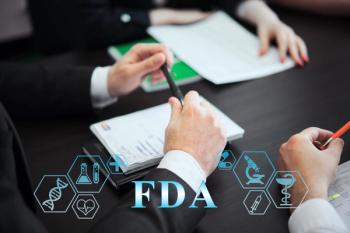
Making the Most of the Rising Biopharma M&As
Biopharma deal-making is on the rise again and now is the time for biopharma companies to embrace M&As to prepare for future growth.
Last year was a down year for mergers and acquisitions (M&As) because of the pandemic, but biopharma deal-making is once again on the rise, evidenced by Gilead Sciences finalizing its purchase of Immunomedics. Gilead is one of many global biopharmaceutical companies hoping to find footing in the United States for two reasons: Biotech innovation has skyrocketed and U.S. tax penalties have been mitigated. Now is the time for biopharma companies to embrace M&As to prepare for future growth.1
The uptick in M&As after a slow year may seem surprising, but it’s not a new trend. This activity has climbed since the 2012 patent cliffs, which forced big pharma to shorten research and development timelines2 to get therapies to market more quickly. Additionally, biopharmaceutical companies created business strategies to sell their companies by engaging in open innovation strategies. For example, a small biotech would focus on one therapy, seek a big pharma partner, and then get acquired by the big pharma partner once it hit a certain stage in development (usually the lesser-risk stages).
Over the past decade, M&As have triggered crucial R&D advancements for biopharma companies across the globe, but their success requires specific strategies. Without the right merger-and-acquisition plan in place, companies risk losing efficiencies and more. Below, I’ll address some strategies that biopharma companies can use to successfully prepare for potential deals amid the M&As momentum of 2021.
Common M&A challenges
The M&A process comes with its own set of hurdles. One obstacle arises when the seller is unprepared; the other happens when smaller companies merge with bigger companies and face stark cultural differences.
First, many sellers do not realize just how many documents they need to prepare for a buyer to attach value to their company and assess the risk of purchasing the company. This includes understanding who has stakes in the intellectual property that the big pharma company is interested in purchasing. These can turn into deal breakers if the risk associated with the stakeholders is too high. After all, buyers are very interested in the quality of the seller’s IP, and proper preparation will focus on whether the seller has adequately protected its IP, understands its trademarks and copyright products, and has preserved its trade secrets. If the seller neglects these pieces or is involved in litigation over them, the M&A could fail.
Second, the integration of the purchased company into the buyer’s company is a large undertaking. It’s even more intense when the M&A involves a big publicly traded company purchasing a smaller private company that is not used to publicly traded corporate culture. At this point, smaller companies have to learn the formal and informal knowledge of the IP between the buyer and the seller, adjust to changes in influence over business decisions, and figure out how key relationships shift. These changes must happen without jeopardizing important connections or losing knowledge.
My research has illuminated important insights about mergers and acquisitions that can help companies address these challenges. M&A is considered an open innovation strategy because a firm goes outside itself to acquire a new capability with an acquisition; therefore, evidence supported sharing risks or uncovering associated risks. These transactions are risky because if the buying firm does not realize the value of the acquisition, there is a high sunk cost for all parties involved. Also, from a consulting perspective, smaller firms do not realize the resources and time required by M&As to understand the transition period. This usually detracts from their primary business activities.
How to move forward
Identifying the challenges associated with biopharma M&As helps clients identify potential solutions. Initially, both the buyer and seller should understand their motivation for embarking on the complex M&A journey. Next, it’s important to communicate the phases and clearly note the expectations for the parties, because this helps keep clients on track. Furthermore, understanding the corporate culture and values of both the buyer and seller will help each party gain a deeper understanding as to whether the two firms will merge smoothly.
Here are a few ways biopharma leaders can prepare for potential deals as M&As continue to gain momentum as 2021 unfolds:
1. Understand transformational transactions versus incremental transactions
Is one of the benefits of the transaction a transformation to your business model that uncovers revenue sources and enters you into a “blue ocean”3 in the marketplace? This is when companies create a previously nonexistent demand for something rather than competing for it with other companies. Or are you benefiting from a more incremental transaction to add a layer of IP to accelerate your development speed? You need to understand this before formalizing the M&A process.
2. Undergo a thorough risk assessment
When you are reviewing the potential targets, how are you assessing the risk to businesses coming together under a combined portfolio of services? Evaluate the risk through the lens of a regulator. COVID-19 has underscored the role of regulation in pharma and biopharma, so it’s important to evaluate the sale in light of regulation. Think of how combining the businesses will help you move quickly through regulatory processes to get to market via clinical trials.
3. Develop digital transformation targets
COVID-19 also expedited digital transformations across several industries, including pharma. This can also lead to a more transformational acquisition strategy. How are you evaluating targets to digitally transform your R&D processes to accelerate them? Are you using artificial intelligence or medtech acquisition targets? Evaluate the risks and benefits of these potential changes to determine how they will impact the company and its place in the market.
The spike in M&As since 2020 emphasizes the importance of extensive preparation by all parties involved. Before undergoing this type of change, evaluate the purpose of the M&A, the associated risks, and the transition process. Once companies spend the time preparing for such a process, you are one step closer to success.
Dr. Bethany Valente is the founder and managing partner of
Notes
Newsletter
Lead with insight with the Pharmaceutical Executive newsletter, featuring strategic analysis, leadership trends, and market intelligence for biopharma decision-makers.





